The Art of Drug Synthesis
Foreword. Preface. Contributors. 1 THE ROLE OF MEDICINAL CHEMISTRY IN DRUG DISCOVERY (John A. Lowe, III). 1.1 Introduction. 1.2 Hurdles in the Drug Discovery Process. 1.3 The Tools of Medicinal Chemistry. 1.3.1 In Silico Modeling. 1.3.2 Structure-Based Drug Design (SBDD). 1.4 The Role of Synthetic Chemistry in Drug Discovery. References. 2 PROCESS RESEARCH: HOW MUCH? HOW SOON? (Neal G. Anderson). 2.1 Introduction. 2.2 Considerations for Successful Scale-up to Tox Batches and Phase I Material. 2.3 Considerations for Phase 2 Material and Beyond. 2.3.1 Reagent Selection. 2.3.2 Solvent Selection. 2.3.3 Unit Operations. 2.3.4 Developing Simple, Effective, Efficient Work-ups and Isolations. 2.3.5 The Importance of Physical States. 2.3.6 Route Design and Process Optimization to Minimize COG. 2.4 Summary. References. I CANCER AND INFECTIOUS DISEASES. 3 AROMATASE INHIBITORS FOR BREAST CANCER: EXEMESTANE (AROMASIN), ANASTROZOLE (ARIMIDEX), AND LETROZOLE (FEMARA) (Jie Jack Li). 3.1 Introduction. 3.2 Synthesis of Exemestane. 3.3 Synthesis of Anastrozole. 3.4 Synthesis of Letrozole. References. 4 QUINOLONE ANTIBIOTICS: LEVOFLOXACIN (LEVAQUIN), MOXIFLOXACIN (AVELOX), GEMIFLOXACIN (FACTIVE), AND GARENOXACIN (T-3811) (Chris Limberakis). 4.1 Introduction. 4.1.1 Mechanism of Action. 4.1.2 Modes of Resistance. 4.1.3 Structure-Activity Relationship (SAR) and Structure-Toxicity Relationship (STR). 4.1.4 Pharmacokinetics. 4.1.5 Synthetic Approaches. 4.2 Levofloxacin. 4.3 Moxifloxacin. 4.4 Gemifloxacin. 4.5 Garenoxacin (T-3811): A Promising Clinical Candidate. References. 5 TRIAZOLE ANTIFUNGALS: ITRACONAZOLE (SPORANOX), FLUCONAZOLE (DIFLUCAN), VORICONAZOLE (VFEND), AND FOSFLUCONAZOLE (PRODIF) (Andrew S. Bell). 5.1 Introduction. 5.2 Synthesis of Itraconazole. 5.3 Synthesis of Fluconazole. 5.4 Synthesis of Voriconazole. 5.5 Synthesis of Fosfluconazole. References. 6 NON-NUCLEOSIDE HIV REVERSE TRANSCRIPTASE INHIBITORS (Arthur Harms). 6.1 Introduction. 6.2 Synthesis of Nevirapine. 6.3 Synthesis of Efavirenz. 6.4 Synthesis of Delavirdine Mesylate. References. 7 NEURAMINIDASE INHIBITORS FOR INFLUENZA: OSELTAMIVIR PHOSPHATE (TAMIFLU) AND ZANAMIVIR (RELENZA) (Douglas S. Johnson and Jie Jack Li). 7.1 Introduction. 7.1.1 Relenza. 7.1.2 Tamiflu. 7.2 Synthesis of Oseltamivir Phosphate (Tamiflu). 7.3 Synthesis of Zanamivir (Relenza). References. II CARDIOVASCULAR AND METABOLIC DISEASES. 8 PEROXISOME PROLIFERATOR-ACTIVATED RECEPTOR (PPAR) AGONISTS FOR TYPE 2 DIABETES (Jin Li). 8.1 Introduction. 8.1.1 Insulin. 8.1.2 Sulfonylurea Drugs. 8.1.3 Meglitinides. 8.1.4 Biguanides. 8.1.5 Alpha-Glucosidase Inhibitors. 8.1.6 Thiazolidinediones. 8.2 Synthesis of Rosiglitazone. 8.3 Synthesis of Pioglitazone. 8.4 Synthesis of Muraglitazar. References. 9 ANGIOTENSIN AT1 ANTAGONISTS FOR HYPERTENSION (Larry Yet). 9.1 Introduction. 9.2 Losartan Potassium. 9.2.1 Introduction to Losartan Potassium. 9.2.2 Synthesis of Losartan Potassium. 9.3 Valsartan. 9.3.1 Introduction to Valsartan. 9.3.2 Synthesis of Valsartan. 9.4 Irbesartan. 9.4.1 Introduction to Irbesartan. 9.4.2 Synthesis of Irbesartan. 9.5 Candesartan Cilexetil. 9.5.1 Introduction to Candesartan Cilexetil. 9.5.2 Synthesis of Candesartan Cilexetil. 9.6 Olmesartan Medoxomil. 9.6.1 Introduction to Olmesartan Medoxomil. 9.6.2 Synthesis of Olmesartan Medoxomil. 9.7 Eprosartan Mesylate. 9.7.1 Introduction to Eprosartan Mesylate. 9.7.2 Synthesis of Eprosartan Mesylate. 9.8 Telmisartan. 9.8.1 Introduction to Telmisartan. 9.8.2 Synthesis of Telmisartan. References. 10 LEADING ACE INHIBITORS FOR HYPERTENSION (Victor J. Cee and Edward J. Olhava). 10.1 Introduction. 10.2 Synthesis of Enalapril Maleate. 10.3 Synthesis of Lisinopril. 10.4 Synthesis of Quinapril. 10.5 Synthesis of Benazepril. 10.6 Synthesis of Ramipril. 10.7 Synthesis of Fosinopril Sodium. References. 11 DIHYDROPYRIDINE CALCIUM CHANNEL BLOCKERS FOR HYPERTENSION (Daniel P. Christen). 11.1 Introduction. 11.2 Synthesis of Nifedipine (Adalatw). 11.3 Synthesis of Felodepine (Plendilw). 11.4 Synthesis of Amlodipine Besylate (Norvascw). 11.5 Synthesis of Azelnidipine (Calblockw). References. 12 SECOND-GENERATION HMG-CoA REDUCTASE INHIBITORS (Jeffrey A. Pfefferkorn). 12.1 Introduction. 12.2 Synthesis of Fluvastatin (Lescolw). 12.3 Synthesis of Rosuvastatin (Crestorw). 12.4 Synthesis of Pitavastatin (Livalow). References. 13 CHOLESTEROL ABSORPTION INHIBITORS: EZETIMIBE (ZETIA) (Stuart B. Rosenblum). 13.1 Introduction. 13.2 Discovery Path to Ezetimibe. 13.3 Synthesis of Ezetimibe (Zetia). References. III CENTRAL NERVOUS SYSTEM DISEASES. 14 DUAL SELECTIVE SEROTONIN AND NOREPINEPHRINE REUPTAKE INHIBITORS (SSNRIs) FOR DEPRESSION (Marta Pineiro-Nunez) 14.1 Introduction. 14.2 Synthesis of Venlafaxine. 14.3 Synthesis of Milnacipran. 14.4 Synthesis of Duloxetine. References. 15 GABAA RECEPTOR AGONISTS FOR INSOMNIA: ZOLPIDEM (AMBIEN), ZALEPLON (SONATA), ESZOPICLONE (ESTORRA, LUNESTA), AND INDIPLON (Peter R. Guzzo). 15.1 Introduction. 15.2 Synthesis of Zolpidem. 15.3 Synthesis of Zaleplon. 15.4 Synthesis of Eszopiclone. 15.5 Synthesis of Indiplon. References. 16 a2d LIGANDS: NEURONTIN (GABAPENTIN) AND LYRICA (PREGABALIN) (Po-Wai Yuen). 16.1 Introduction. 16.2 Synthesis of Gabapentin. 16.3 Synthesis of Pregabalin. References. 17 APPROVED TREATMENTS FOR ATTENTION DEFICIT HYPERACTIVITY DISORDER: AMPHETAMINE (ADDERALL), METHYLPHENIDATE (RITALIN), AND ATOMOXETINE (STRATERRA) (David L. Gray). 17.1 Introduction. 17.1.1 Stimulant versus Nonstimulants. 17.2 Synthesis of Amphetamine. 17.2.1 Pharmacokinetic Properties of d- and l-Amphetamine. 17.2.2 Chiral Synthesis of Amphetamine. 17.3 Synthesis of Methylphenidate. 17.3.1 Methylphenidate Formulations. 17.3.2 Chiral Synthesis of Methylphenidate. 17.4 Synthesis of Atomoxetine. References. Index.
{{comment.content}}
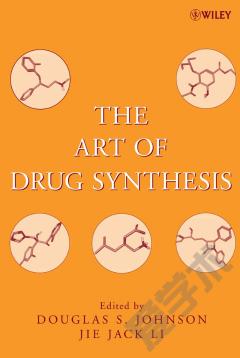
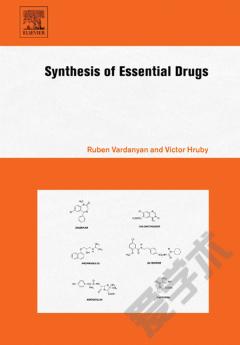

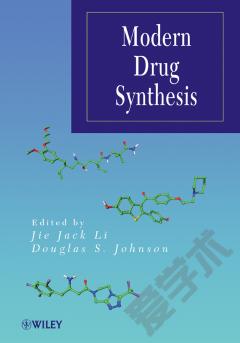
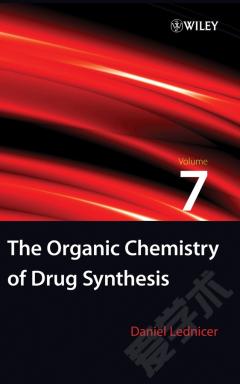
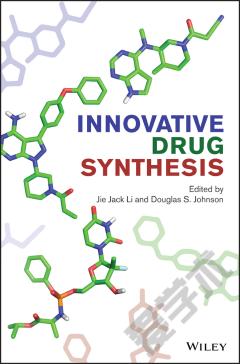


 京公网安备 11010802027623号
京公网安备 11010802027623号